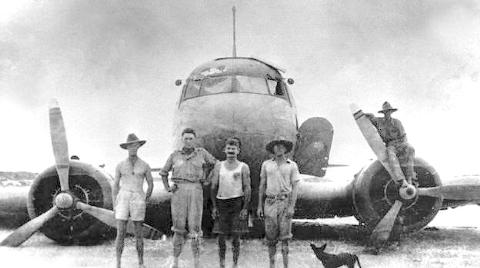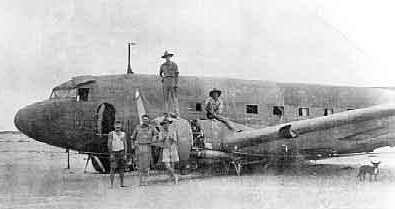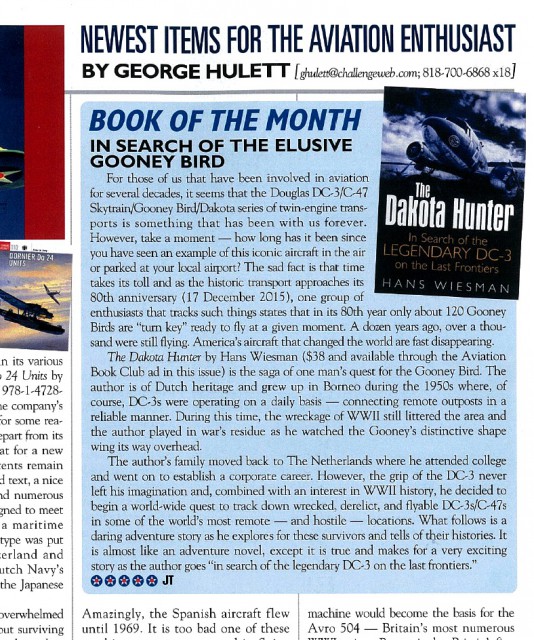
With the advance of the Japanese invasion force early 1942 in The Netherlands East Indies, the Dutch military and civilians must have felt some panic and an true exodus started for making an escape to Australia by boat or by plane, the only free country within flight range of aircraft.
KLM had an East Indies fleet of DC-3’s under KNILM banner and one of them, PK-AFV named Pelikaan , was busy making ferry flights from Bandung (Java) to Broome ( NW Australia) under Captain Smirnoff, a legendary ex Russian veteran/ pilot of WWI. He was one of the pioneers in the early 1930’s East Indies flights, that settled the reputation of KLM worldwide as one of the first airliners that spanned the globe already in the era of the primitive aircraft as the tri-motor Fokkers.
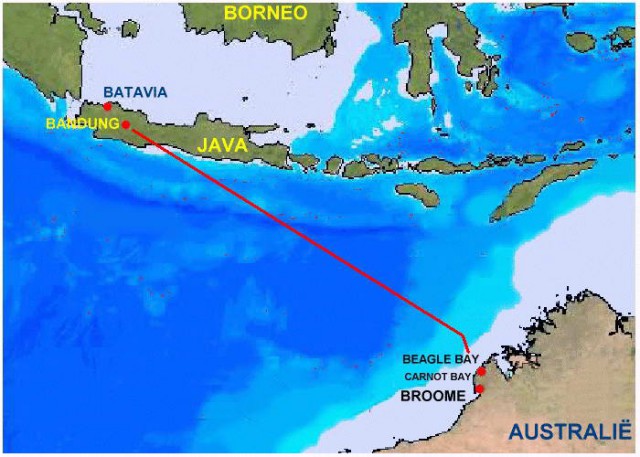
On 3 March 1942, just a few days before the Japanese arrived on Java, Smirnoff departed with the DC-3 with his co-pilot, a radio operator and 8 passengers, including one woman and her 18 months old child.
From Java to Australia, they hit the coast line in Kimberley on the way to Broome. By sheer coincidence, Broome airport had come that same day under heavy attack from Mitsubishi A6M Zero’s. As they had finished their day of destruction, the fighters returned to their base on Timor Island, East of Java. The lower flying DC-3 was spotted by the Japanese squadron, and was immediately attacked by a couple of Zero’s.
The Zero, Mitsubishi A6M, that attacked the Diamond DC-3
The Dutch aircraft took a large number of directs hits, and the captain was hit several times in arms, hip and leg. Nevertheless, Smirnoff as an expert flyer, made an evasive dive and spiraled the aircraft steeply to the beach of Carnot Bay.
The port engine was shot in flames that must have seriously jeopardized the aircraft’s flight with the risk of an explosion or a folding wing with the flames licking over the airfoil. In what was later described as the most stunning flight of escape ever survived, the pilot managed to land the aircraft on the water front, with wheels down. Just before touchdown on the beach, a tire exploded and the aircraft made a swing into the surf. That extinguished the engine fire instantly and all on board had survived this most miraculous crash landing.
Unfortunately, even before they hit the beach, some passengers were seriously hit by the Zero bullets, 300 of them counted as holes. The DC-3 now crippled was laying as a wounded whale on the beach, the Zeros did a few strafing runs that must have inflicted more harm and agony. As a result, the one Lady passenger, her child and 2 more passengers, they sadly died over the next day on the beach.
But the ordeal of the survivors was not yet over. They were far away from the nearest post that could bring relief. Smirnoff sent out a couple of men, to go in search for help. The first group returned with no results and a second group was formed with the explicit order NOT to come back before any help was found. They finally ran into a group of aboriginals that brought them in contact with a missionary post.
Seven days after the crash , the survivors were found and brought back to civilization, by truck to Broome, where they learned of the Japanese attack on the local airport.
But even with that, the affair was not closed, far from that. Just before departure of the doomed DC-3 , the Bandung airport Manager had handed over to Smirnoff a sealed cigar box with the message that the box was to be delivered at the Commonwealth Bank in Broome and that it’s content had a high value.
With the ferocious Zero attack and ensuing crash landing on the beach, one can imagine that Smirnoff right after the touch down and under fire from strafing Zero’s had a few other things on his mind than caring about an anonymous cigar box, packed in brown paper. He claimed later that the box must have washed out of the plane with the incoming surf. He had put the parcel in the first aid box in the cockpit and had seen it being flushed out of the fuselage.
It turned out that the content of the cigar box had a value of some 300.000 Australian Pounds that had disappeared, a huge amount by the 1942 standard ( By now worth a whopping 14 million Euro). Was that amount gone into the water or into the pocket of someone?
A local Beachcomber from Broome, named Jack Palmer had arrived on the scene 2 weeks after the incident and had taken all the time (and photos as shown) of the world to investigate the crash site and the aircraft in details. He and his salvage party arrived on horses at Carnot Bay, you can see him standing proudly in front of the stricken Dc-3 in a white Tank top .
What they may have found there was so mind blowing, that nobody really cared for the making of Hi Res photos. My sincere apologies for the low res photos, but they are too good to discard.
It is assumed that he had found the cigar box, whether inside the plane or on the beach. He had most probably broken the seals and Pandora’s Box opened in front of him with an array of jewels as he had never seen before.
With the investigation of detectives later in full swing, Palmer one day made a surprise move. He went to see the authorities and threw from a jar over the table a load of jewels with an estimated value of some 20.000 Pounds. It surely will have caused some jaws dropping, but it was only a fraction of the total treasure from the cigar box.
Mr Jack Palmer had no idea : what other jewels?
In 1943 , he and 2 associates were tried in Supreme Court for the theft of the diamonds, presumed the biggest robbery of all Australian history. But all three of them were acquitted and no other person had ever been tried for this mysterious loss of the DC-3 Diamonds.
However, some of the missing stones later surfaced miraculously with diamond dealers, and in hands of aboriginals but the question whether Jack was really involved with the missing stones, (so knowing more of the stones that were not in the jar). will remain forever an enigma.
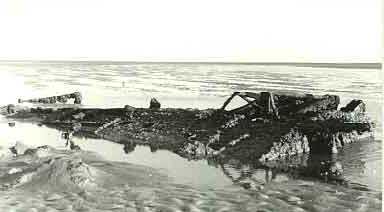
If you like to read about the tales of the DC-3 / C-47 in war time or of post war stories of this legendary aircraft in Bolivia, Venezuela, Honduras, Alaska, Yukon and other remote places, I can recommend you my book “The Dakota Hunter”.
Published by Casemate USA / UK in May 2015, the book has been selected by the leading US Aviation magazine AIR CLASSICS as the ´Book of the Month` with a 5 star recommendation described as `a Must in every Aviation Library` .
You can read their most positive review above, and just in case you still might have some doubts, have a sneak preview into my book with 320 pages and 250 photos. Please come to my site at www.dc3dakotahunter.com where you can order the book directly with a mouse click at Amazon, Barnes and Noble etc.


